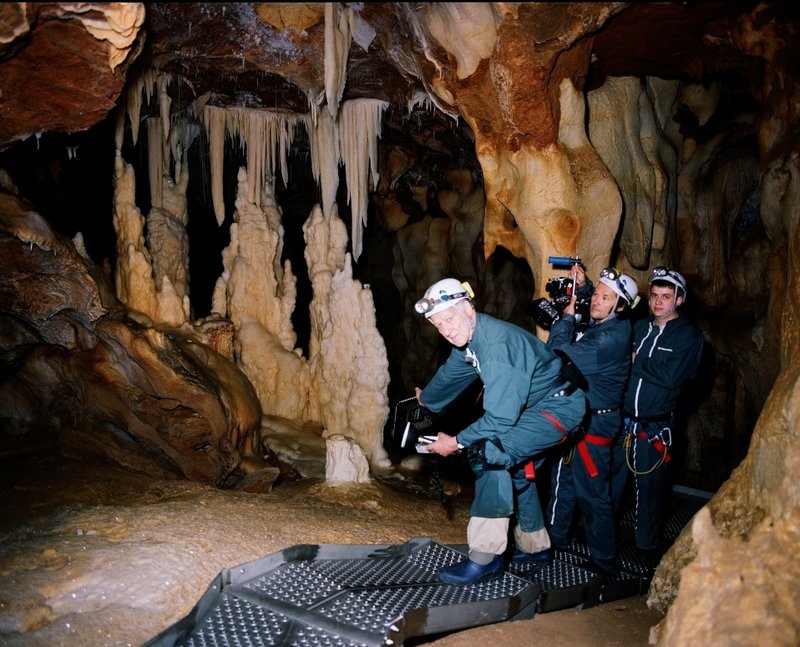Director: Werner Herzog,
Watched in: Theater,
Rating: 2.5/5.
In 1994, three explorers stumbled upon a series of caves in Southern France that contained an amazing array of 30,000 year old drawings: charcoal renderings of lions, bears, rhinos, and horses, expertly etched on smooth, curved walls of stone. The pictures reveal a reverence for nature and motion and the creative spirit in the artists who drew them, the same qualities shared by the 21st century filmmaker, Werner Herzog, who was granted limited but exclusive access to the caves for Cave of Forgotten Dreams, shot in 3D.
Working in tight spaces with a small crew, minimal lighting, and restricted access along a single steel boardwalk threaded throughout the caves, Herzog crafts a documentary that is as entertaining as it is loopy and long-winded. One part science project, one part metaphysical inquiry, and several parts tongue-in-cheek ballyhoo, Cave of Forgotten Dreams succeeds in revealing the primitive artistry of our neanderthalic ancestors and inciting our own imaginations to wonder at the unique creative capacity of the human mind, but it also points up the diminishing returns in Herzog’s languorous, rambling approach to documentary filmmaking.
Where his excellent film, 2005’s Grizzly Man, grew into an ever more transfixing, horrifying portrait of a man who succumbed to nature’s inherent savagery, his last two documentaries, Encounters At the End of the World and Cave of Forgotten Dreams, are content to wander through their subject matter, stopping now and again for conversations with eccentric characters, or to muse on vague, mystical ideas of our place in the natural world.
Thanks to Herzog’s own unique narration, with its distinct English-as-a-second-language articulation of vowels and hard consonants, he is always a delightful guide. His ruminations on the nascent sparks of creativity, the artistic spirit that separates us from the beasts, are always enjoyable even when they seem half-baked. His off-hand interview style, less concerned with facts and figures and more interested in the personality of the interviewee, is a refreshing change from the usual tattoo of documentary’s talking heads. But Herzog quickly runs out of material in this film, stretching a 45-minute History Channel episode to a patience-trying 90-minute feature. And his decision to shoot on 3D, using a small camera and an inadequate lighting package, is a major miscalculation.
I can’t say whether viewing it in the two dimensions of your television or computer will improve the visual appeal of the film, but to my eyes 3D technology does little to enhance two dimensional art. Herzog employs the gimmicky technology to re-create the effect of traveling through the caves, but the lighting is so poor, the access so narrow, and the camerawork so shaky that the extra dimension becomes a distraction. The exterior scenes, while lovely in theory, are often mussed by the grey fuzziness inherent in 3D’s edges, a visual artifact that reminds me of freezer burn on a popsicle. The effect is especially repellent during the interviews, in which a person’s head and shoulders loom out of the screen while the background telescopes into mush. These problems may be mitigated by viewing the film in two dimensions instead of three. But by the end of Cave of Forgotten Dreams, having exhausted the potential of the medium and the subject matter, Herzog simply repeats images of the cave paintings over an electronic trance soundtrack, turning the oldest known pictorial wonders of humankind into wallpaper.

